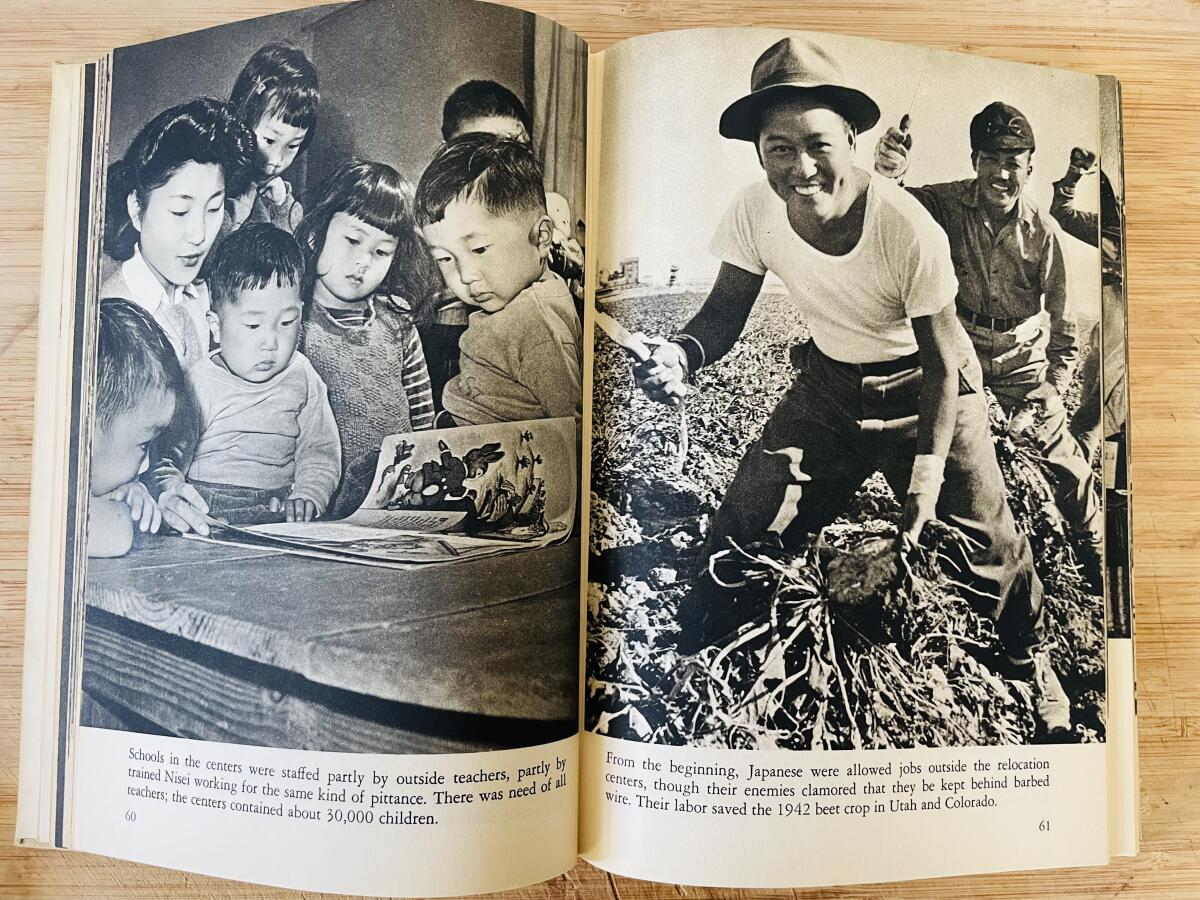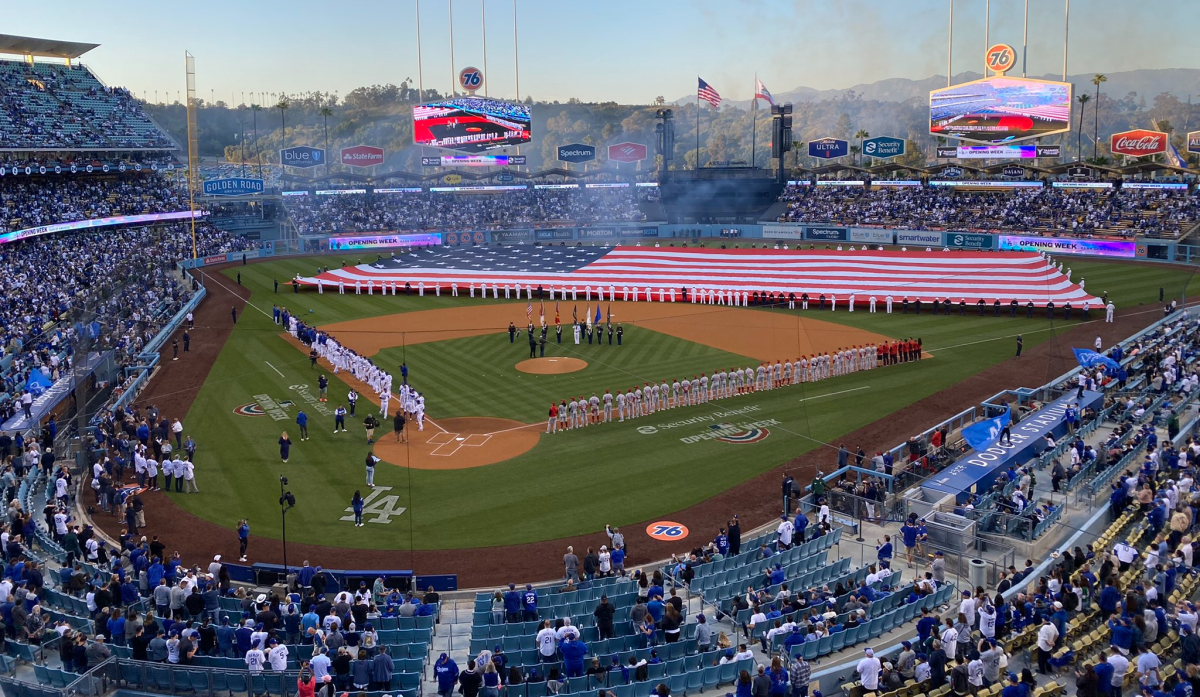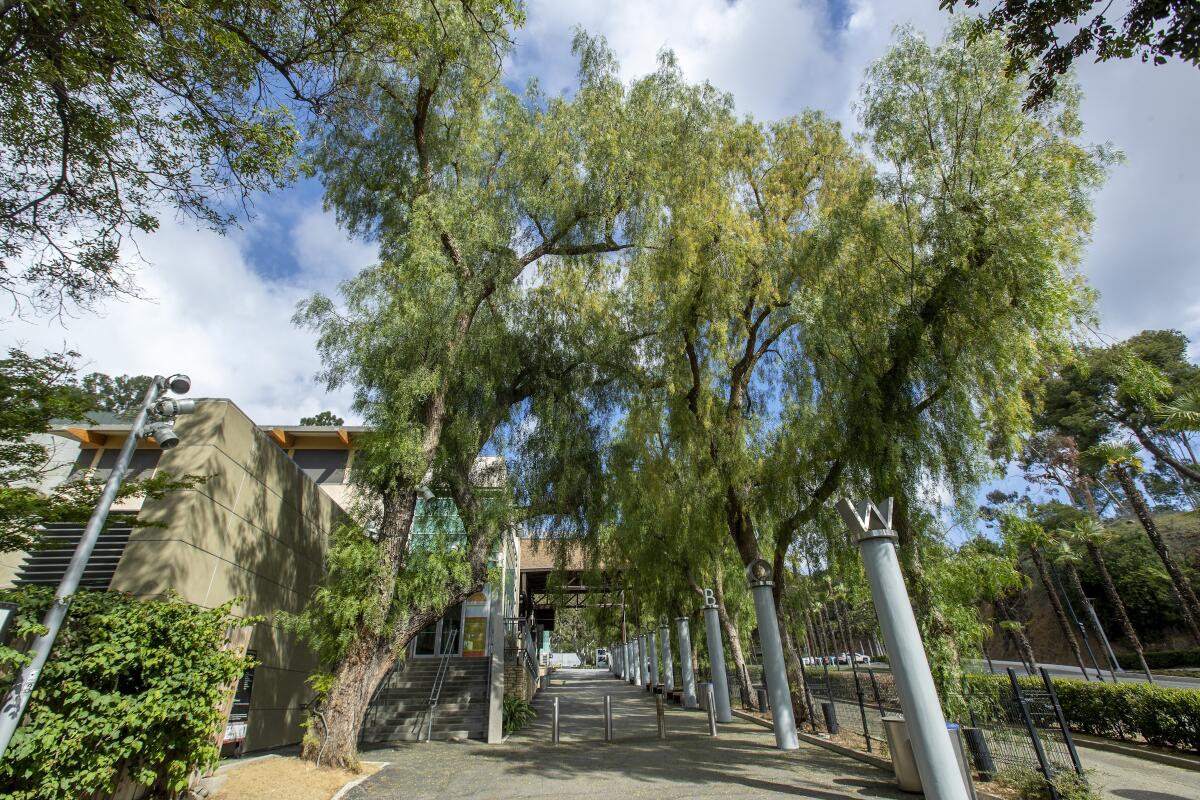A legendary writer’s forgotten indictment of California’s racism

- Share via
Good morning, and welcome to the Essential California newsletter. It’s Tuesday, July 12, 2022. I’m Gustavo Arellano, reporting from Orange County.
When Wallace Stegner died in 1993, obituaries across the country hailed the Los Altos resident as the dean of writers about the American West. His body of literature — essays, nonfiction tomes, novels and more — and work as an editor and professor influenced a generation of writers such as former students Ken Kesey, Larry McMurtry, Wendell Berry and even future Supreme Court Justice Sandra Day O’Connor. But Stegner has slowly receded from the American popular imagination, as a new generation of writers have critiqued his “white” gaze and universities have stopped teaching his work.
There’s one Stegner book, however, that I think those haters might embrace and that few Stegner fans have ever read: “One Nation.”
It’s a 1945 collection of essays and stark black-and-white photos drawn from assignments with Look magazine. Long out of print, “One Nation” is an unflinching view of the prejudice minorities across the United States — Black people, Jews, ethnic Catholics, Native Americans and others — faced at a time when this country was supposedly united against bigotry in the face of the Axis menace during World War II.
“We are not dealing with isolated and local situations, or even primarily with a national situation,” Stegner wrote in his intro. “Things we have permitted have a clear relationship with Nazi practices; the difference is only a difference in degree.”
And no state was nastier in Stegner’s estimation than California.
He devotes four chapters to Golden State bigotry, each respectively focused on the struggles of Filipinos, Japanese, Chinese and urban Mexicans. We see manongs (an Ilocano term that translates as “elder brother” but signifies a respected older man in Filipino American culture) working the harvest in the Central Valley and going to Stockton, where a sign that reads “Positively No Filipinos Allowed” hangs on the door. He follows Japanese Americans from the relative safety of Little Tokyo to incarceration camps to the 442nd Regimental Combat Team, the Army’s legendary “Go for Broke” regiment. Legendary cinematographer James Wong Howe captures San Francisco’s Chinatown as a vibrant neighborhood that has survived in spite of decades of legally sanctioned segregation.
Meanwhile, Stegner kicks it with the pachucos of Boyle Heights, which he deems a “lost generation” even as photos of chucos suaves and guisas firmes having a good time suggest otherwise (of particular note: a drawing of a buff homeboy from Happy Valley ready to beat down a trembling Okie who pleads, “Now let’s be reasonable”).
Stegner’s writing can come off as paternalistic all these decades later, but his outrage is palpable. It’s a remarkable indictment of the California dream, at a time when the only other person willing to critique the state’s treatment of minorities on a national platform was Carey McWilliams. This was ethnic studies before ethnic studies.
I’m not a Stegner scholar, so I’m not sure why it didn’t sell or why so few remember “One Nation” today. You’re going to find it only in library special collections or at used bookstores for the starting price of $100 (sorry, you can’t borrow my copy). But it’s a worthwhile, essential read for Stegner fans, lovers of California, and people who believe in the “America for all” that Stegner begs his readers to build in the conclusion.
“It’s a job,” he concludes, in words that continue to resonate, “for the average Americans in every community, the Smiths and Johnsons and Browns in whose image democracy was created.”
And now, here’s what’s happening across California:
Note: Some of the sites we link to may limit the number of stories you can access without subscribing.
L.A. STORIES
California cities ban new gas stations in a battle to combat climate change. I’m sure the nice burbs in the Bay Area that have implemented this policy and the politicians who are pondering such a move have tapped into Ed Begley Jr.’s Simpsonian technology of powering cars with one’s own sense of self-satisfaction. Los Angeles Times
Dodger Stadium concession workers threaten to strike All-Star Game. The mighty Unite Here Local 11 always knows how to troll Angeleno civic life in the name of worker dignity. Los Angeles Times

Larry Wilmore knows no bounds. The legendary television writer, producer and mentor talks his craft but also about growing up in Pomona when it was a hub of middle-class Black life in Southern California. Vulture
The Zacatecas-LAX express. UC Riverside professor and fellow jerezano Adrián Félix pens a beautiful tribute to the ritual that thousands of Southern Californians are taking this summer (but, compa profe, what about the CBX crossing at Otay Mesa?). Tropics of Meta
Our daily news podcast
If you’re a fan of this newsletter, you’ll love our daily podcast “The Times,” hosted every weekday by columnist Gustavo Arellano, along with reporters from across our newsroom. Go beyond the headlines. Download and listen on our App, subscribe on Apple Podcasts and follow on Spotify.
POLITICS AND GOVERNMENT
She won a local election in a landslide. A conservative activist launched a recount anyway. Randy Economy, late of the laughable Gavin Newsom recall effort, tried to waste everyone’s time in Nevada County. He called it off after The Times published an article about it. Los Angeles Times
An exit interview with Ana Matosantos, Newsom’s Cabinet secretary. Off to the next adventure this keeper of secrets goes! Los Angeles Times
Animation museum project secures $2.5 million from California. Sponsoring state Sen. Anthony Portantino (D–La Cañada Flintridge) must’ve forgotten that animation is a multibillion-dollar industry, and that his district has more pressing needs than subsidizing Hollywood giants — like reminding the rest of us how to get to La Cañada Flintridge. Hollywood Reporter
CRIME, COURTS AND POLICING
How drag queens are fighting queer censorship. After the Proud Boys targeted Drag Queen Story Hours throughout Pride Month, one San Francisco-based drag performer is finding hope in young people and the LGBTQ+ community. The Progressive
First Fresno cannabis dispensary opens. City Council member is first official customer. Somewhere, William Saroyan is laughing. Fresno Bee
Support our journalism
HEALTH AND THE ENVIRONMENT
“No treatment until tragedy” is our mental health system. CARE Court could change. My fellow columnist Anita Chabria argues that Gov. Newsom’s plan to create a civil system of courts to handle cases of severe mental illness “isn’t just a good idea but a moral obligation.” Los Angeles Times
Viral video shows sea lions chasing beachgoers at La Jolla Cove. Somewhere, Buster Bluth is crying. Los Angeles Times

En celebracíon de un árbol de pimienta. You’re gonna have to know how to read Spanish to read this Paraguayan newspaper and wonderful history of Southern California’s pepper trees — but you already know how to español, right? ABC Color
CALIFORNIA CULTURE
How an acclaimed cartoon shines a “crucial” spotlight on Black American Sign Language. Cartoon Network’s delightful “Craig of the Creek” takes representation to the next level through the help of the Southern California Black Deaf Advocates. Los Angeles Times
How this champagne-hued Ford pickup from 1965 stole Adri Law’s heart. Nothing against the Angeleno native profiled, but as the owner of a ’68 VW Bus, a ’79 Ford Supercab, and a ’73 Eldo convertible, Rancheros are whatever. Bloomberg Pursuits
Death and the playwright. Luis Valdez talks about Mayan physicality, his new book, and his legacy. Voices of Monterey Bay
Free online games
Get our free daily crossword puzzle, sudoku, word search and arcade games in our new game center at latimes.com/games.
CALIFORNIA ALMANAC
Los Angeles: partly cloudy, 79. San Diego: partly cloudy, 71. San Francisco: partly cloudy, 68. San Jose: partly cloudy, 84. Fresno: sunny, 105. Sacramento: sunny, 96.
AND FINALLY
Today’s California memory is from Eric Carey:
In 1975, having relocated from the East Coast and rented a small apartment in West L.A., I headed to a nearby department store to pick up a few items. At the cash register, I wrote a check and handed it to the saleswoman with my driver’s license. She studied it, looked up and, giving me the once over, said, “District of Columbia. Is that in South America?”
If you have a memory or story about the Golden State, share it with us. (Please keep your story to 100 words.)
Please let us know what we can do to make this newsletter more useful to you. Send comments to essentialcalifornia@latimes.com.
Sign up for Essential California
The most important California stories and recommendations in your inbox every morning.
You may occasionally receive promotional content from the Los Angeles Times.







